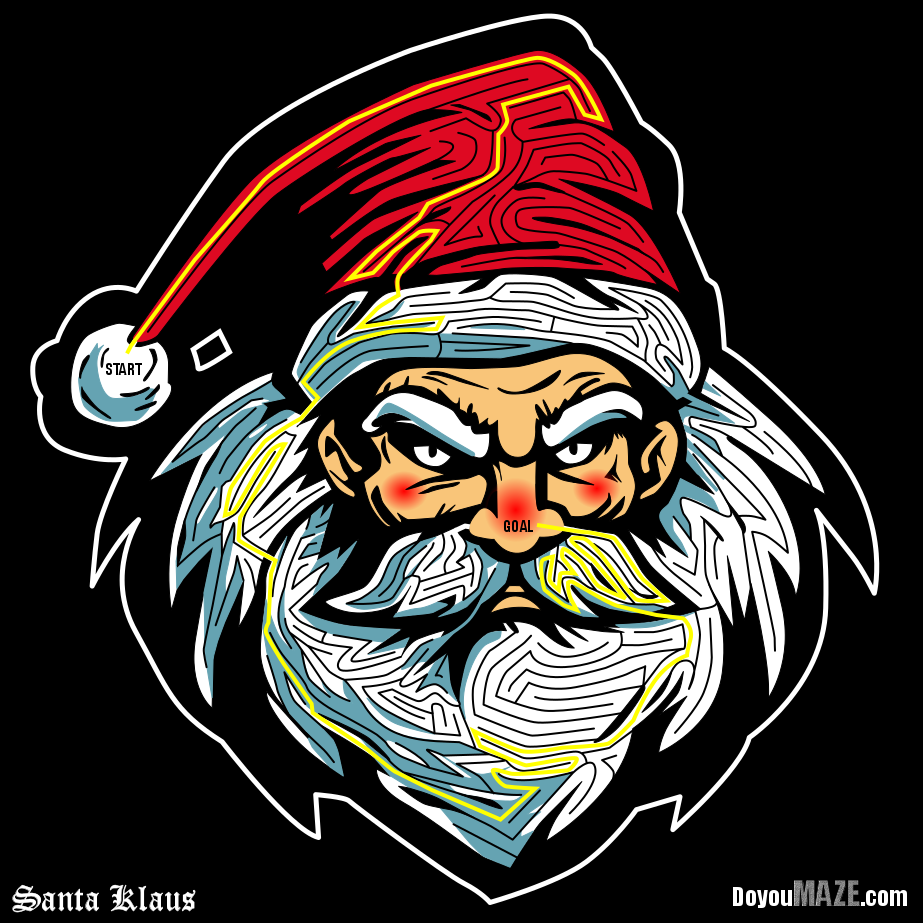Welcome to Part 2 of my series where I look at how to make a Maze Solution page for a book . In Part 1 I used a basic standard maze and formatted the solution for it multiple ways to show how it looked. Here is a summary of what I showed (I suggest you still read the post, Maze Book Creation - Options for making the Solutions page - Part 1 for the visual examples).
Maze Solution Size
Full Size Solution
Reduced Sized Solutions (4,6,9 per pages options)
Maze Solution Coloring
Bolded Solution Pathway
Color Solution Pathway
Decolor the Maze with Black Solution
Dashed Line Solution Pathway
Here in Part 2 I will use a variety of different maze types and experiment to see what solution page method works best for each.
Maze 1 - Weaving Maze Solution
A weaving maze presents an interesting solution issue. The pathways in a weaving maze weave above and below each other so your solution is drawn in parts. My first option was a simple black line. My second option was a bolded version of a black line. And my third option includes the addition of arrows right before each “underpass” in the maze in the direction of the solution. I personally do not think these are needed, but they are an option. I believe all 3 options work and this is all about personal preference.




Maze 2 - Puzzle Maze Solution
So I puzzle maze uses color as part of the rules for solving. Because of this, the optimal solution page includes highlighting the correct pathway using color. My first option uses a contrasting color line (aqua in this case) to show the solution. The second option is my preferred solution format, using greyscale to de-emphasize the wrong squares making the solution pathway pop in the original colors.



Maze 3 - Large Maze Art Solution
For this example I am using my maze of the Moon. It is a large maze with a lot of detail. When making the solution, the full size version is difficult to see, so reducing the scale would further complicate the solution page. My example solution comes from a slide for the video of the maze being made, then solved on my YouTube Channel. I used a stamp of the word SOLVED to alert the person what they are looking at.
My first option is a simple red line solution, but it is hard to see despite the contrasts in color. I think it does not work well. The second option uses greyscale for the maze (I converted the black line to grey) and bolded the red bolded line so it is easier to see. I also added the SOLVED stamp I mentioned above. Much better. Option 3 uses the stamp and a red bolded solution on greyscale and it also works well.




Maze 4 - Comic Book Maze Solution
I make comic book cover mazes every Tuesday and compiled them into a free book you can sign-up for. For this Scarecrow Maze Comic Book Cover I wanted to show an example where the background is eliminated for the solution. The maze is only one part of the scene, so in order to fit more solutions on the solutions page I deleted the background completely. In a large book this will save you a couple pages and save on the printing costs.
The format of the solutions I tried were - Black Bolded Solution (this does not work because it is hard to follow when using free drawn pathways), Black Bolded Dashed Solution (better, but not ideal), Red Bolded Solution ( My preferred version because it is easy to see), and Red Dashed on Greyscale ( also works but takes more work to execute).





Maze 5 - Full Color Free Drawn Maze
Before I go through this Santa Maze, take a look at it below and try to determine how you would make a solution for it. It has red, with free drawn pathways, so it is not an easy “solution solution”. I did many options to show what does not work. Here are the options I tried: Black solution - (does not work), Dashed Black solution - (better), Yellow Bold Solution - (works well), Greyscale with red solution - (works well and my preferred solution). If you want to go black and white, go with the Greyscale with black dashed lines solution.






Maze 6 - Arrow Maze Solution
An Arrow Maze is a specialty maze where once you choose a direction, you must follow the arrow where it takes you until you land on a new direction choice arrow.
Full solution - OK. But we can do better !
Greyscale Solution with bold - Greying the maze and leaving the correct solution black with a bold line works perfectly ! Also, you will not pay a premium for color.



My Conclusion : Different maze types mean different types of maze solutions. Use the tools I spoke about in Part 1 and the examples in Part 2 to help you determine what works for your situation.
Happy maze-making !
You like making mazes, so you might like some of my other posts about maze design:
Maze Design Case Study - Designing a Grid Maze in Different Difficulty levels
Maze Construction - 5 Maze Design Decisions Make All the Difference
A Collection of Maze Design Case Studies to Improve Your Mazes








